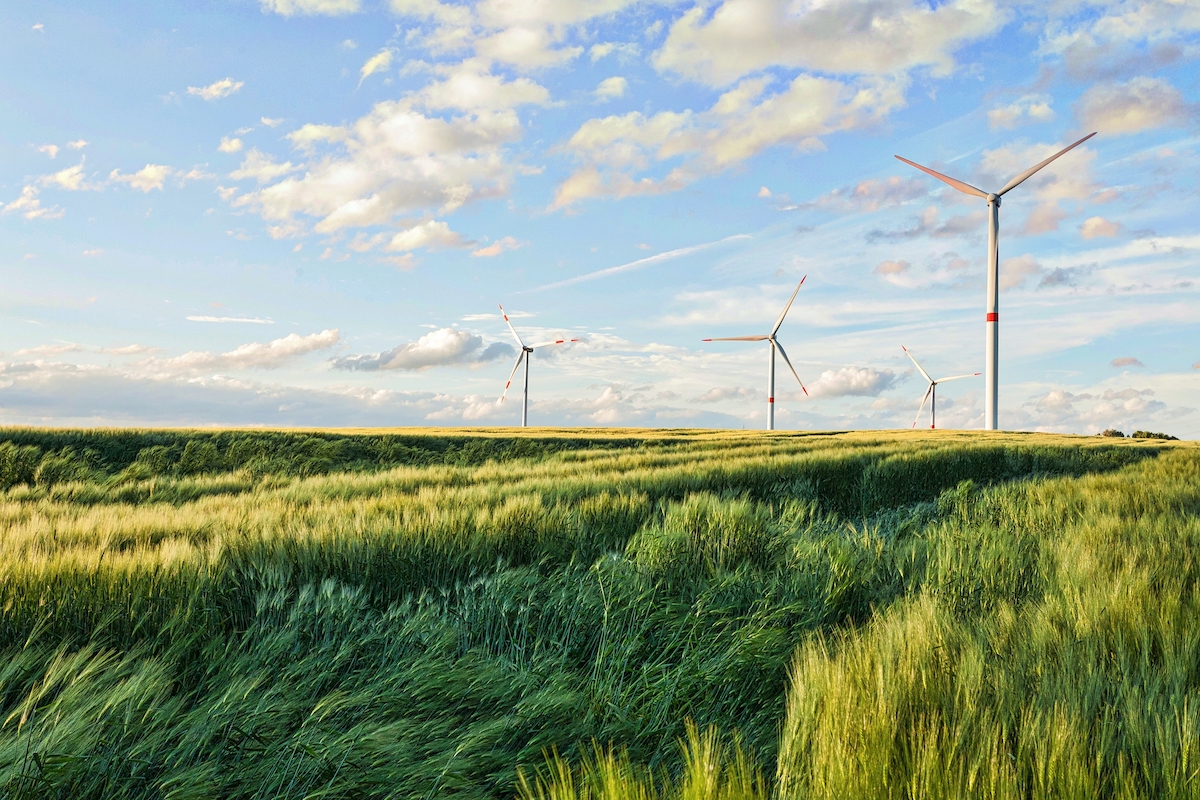Innovations in Generating Clean Energy Have Many Benefits
Siting Clean Energy Production in Cities and on Existing Infrastructure Is Good Land Use

Our image of wind turbines is huge blades mounted atop stanchions either offshore or in canyons or open fields. Because of size, these wind generators are typically located far from urban centers. Recently, however, Joe Doucet, a designer and inventor, has put art and technology together to create a wall capable of generating considerable clean power in urban settings. The wall is a grid of square panes, each designed to spin in wind and feed the generated mechanical energy into a mini generator. As we know, cities have considerable wind, but it is more variable and sporadic than wind patterns in more open terrain. Buildings can block or enhance wind speeds depending on height, bulk, spacing, and overall community design. Doucet uses off-the-shelf components to control cost. His prototype 8′x25′ wall could provide the electricity for most homes.
Large wind turbines produce a lot of renewable energy, but optimum siting can be tricky — finding areas of consistent, strong winds while avoiding major bird, bat, and insect flyways. A big boost in wildlife conservation has been the recent use of the Rogue Detection Team to gather critical data on key plant and wildlife species. As applied to turbine fields, these trained dogs and their handlers can locate 96 percent of dead birds and bats, compared to a human detection rate of just 6 percent.
Sign up for Indy Today to receive fresh news from Independent.com, in your inbox, every morning.
Understanding the magnitude of bird and bat deaths from wind generation leads to better measures to protect these species. For turbines already erected, this would mean installing ultrasonic white-noise machines to deter bats or decreasing turbine speed during peak migration season. For new wind developments, this data can provide vital information to make wind farms as ecologically friendly as possible and help avoid regions where birds and bats are particularly vulnerable to wind operations.
Another strategy to increase renewable energy, although still only in the proposal stage, is to cover some of California’s 4,000 miles of water canals that transport large amounts of water from northern parts of the state to the most populated southern parts. University of California researchers estimate that one to 2 percent of all water being carried in these canals is lost to evaporation. Covering canals with solar panels would save enough water to meet the residential needs of two million people while generating 13 gigawatts of clean energy. Moreover, the water flowing beneath the panels would cool them during hot weather, thereby boosting their output by 3 percent. Installing arrays of panels over the canals would avoid converting valuable farmland and natural habitat to future solar farms, thus protecting delicate ecosystems and vital food production.
These are among many new ideas and strategies to enhance wildlife conservation, increase clean energy generation, mitigate drought, and make better use of land.
Support the Santa Barbara Independent through a long-term or a single contribution.



